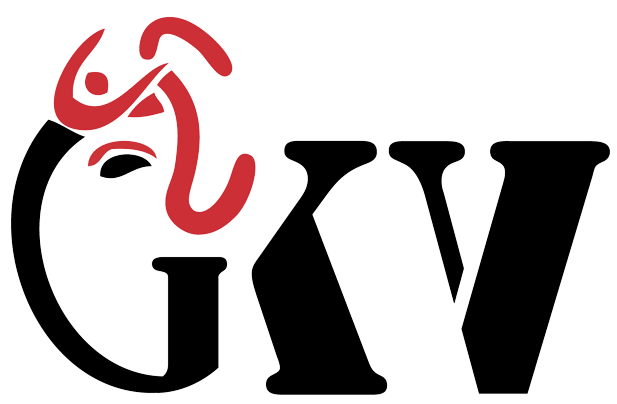Quick delivery of quality applications is very much required in the fast-paced software development world today. Agile has changed the landscape of how applications are built.
Agile Testing becomes a very essential practice for quality all through the life cycle of software development. Contrary to most traditional methods that test applications primarily at the final stage of the process, Agile tests throughout all development stages.
This guide will explain to you what Agile testing is, its fundamental principles, and the difference between traditional testing, best practices, and how to implement it correctly if you’re new to Agile testing or simply looking to understand its fundamental principles.
What Is Agile Testing?
Agile testing refers to the testing practice under the principles of Agile software development. In Agile, tests happen in conjunction with the development and not like waterfall, where they test after the development process is done. Meaning that tests occur continuously and iteratively with frequent changes or code additions.
Agile testing typically follows methodologies, such as Scrum, Kanban, and XP. The core focus is on continuously delivering working software through early, frequent, and high-quality testing. Agile testers collaborate with stakeholders, developers, and product owners to get steady feedback about quality during development time.
Important Characteristics of Agile Testing
- Continuous Testing: Testing is involved continuously at every phase of development by continually being part of the software development cycle.
- Collaborative: The teams of testers and developers meet, discuss, and hence establish a mutual vision of what will be developed by whom.
- Incremental Process: Testing is completed in iterations typically one to four weeks.
- Responsive: Agile Testers respond appropriately to changing the requirements, User stories, and Designs so that there is an actual application of requirements to the Customer’s need.
Why Is Agile Testing Important?
Agile testing is important in modern software development for the following reasons:
- Early Bug Detection: Because testing is continuous and integrated into each iteration, issues are detected early, making them easier and cheaper to fix.
- Faster Delivery: Agile testing helps teams deliver small increments of software in a much faster timeframe compared to traditional methods, leading to quicker releases.
- Improved Collaboration: Agile testers collaborate in real-time with developers and stakeholders for effective communication as well as higher quality of products.
- Flexibility: Since Agile testing is an iterative process, testers are prepared to adapt quickly to changing requirements or priorities with minimal disruption of the overall process of development.
Key Principles of Agile Testing
Agile testing has several guiding principles to it, all falling in line with Agile values and practices. These principles help the tester ensure that they focus on delivering high-quality software with teamwork, adaptability, and continuity.
1. Early and Continuous Testing:Testing is done early in the project and continuously during the development cycle. In this approach, rather than just testing at the end of a project, Agile testing can identify problems just as they start accumulating and thus reduce their defects.
2. Continuous Integration:Continuous integration is part of Agile testing. Developers commit code frequently to the codebase, and tests are run continuously to ensure that the software is always in a deployable state. Automated tests play a significant role in CI.
3. Customer Collaboration Over Contract Negotiation:Agile testing is the collaboration between the testing team, developers, and business stakeholders. The testers need to understand what the user needs are, and the same needs should be confirmed that are perfectly being met during the testing process of SDLC cycles. The customer’s feedback ensures that his or her expectations are met with developed software.
4. Working Software Over Comprehensive Documentation:In Agile, the prime objective is delivering working software. Documentation is not neglected, but the focus is on delivering a working product. This is aligned with the “working software over comprehensive documentation” principle in the Agile Manifesto.
Test cases and user stories are often written and updated dynamically, and testers provide feedback on the product rather than spending excessive time creating exhaustive documentation.
5. Reactive to Change As in following a plan:Agile can be adaptable, and flexible in changes. On the other hand, classical testing has a requirement set in stone; change in the requirement is long motions of rework. Agile testers are sensible to change and responsive to how change towards the product to be delivered will gratify the changed needs of the customer.
Agile Testing Vs Traditional Testing
To understand agile testing more accurately, it is to be juxtaposed with that of the olden testing paradigms including the Waterfall model.
1. Waterfall Model (Traditional Testing):
Testing is carried out separately, after the development phase in the Waterfall model. It therefore means bugs and issues usually crop up late, at the tail end of a project, thus making it expensive and time-consuming to resolve them. The approach for testing is quite rigid with the upfront definition of requirements, giving no scope for any alteration or adjustment.
2. Agile Testing:
In Agile, testing is an ongoing process. Testers work with developers to validate the software with each sprint or iteration. Changes to requirements can be easily accommodated because the focus is on delivering small, functional pieces of software continuously, with a feedback loop built into each sprint.
Best Practices for Agile Testing
Agile testing principles require a change in mentality, and that is not very easy if you are used to more traditional methods. Below are some best practices to guarantee a smooth entry of Agile testing in your team:
1. Collaborate Early and Often:In Agile teams, the tester is part of the process right from the planning and estimation stages. This cooperation of developers, testers, and stakeholders ensures all of them are clear on the features, requirements, and timelines.
Agile testers are also very much involved with the product owner in such a manner that acceptance criteria would be crystal clear and well-aligned with the needs of the customer.
2. Test-Driven Development (TDD):One of the testing practices in Agile is test-driven development. This approach involves writing tests before writing the code that will pass those tests. The cycle goes this way:
- Write a test: Define what the code should do.
- Run the test: The test will first fail because the feature is not yet implemented.
- Write the code: Implement the feature that passes the test.
- Refactor the code. Improve the code while ensuring that the test passes.
TDD allows for clean, testable code while also continuously verifying the software functions correctly.
3. Automation:Automation in Agile testing supports quickening of the testing time. Automated tests are run several times to be sure that there is no impact of new changes over existing functionality.
The tools are used to perform regression, functional, and unit tests by making use of tools like Selenium, JUnit, Cucumber, and TestNG.
4. Continuous Integration and Continuous Testing:Automated tests are integrated with continuous integration tools like Jenkins or Travis CI. Such tools enable the execution of code automatically after each push of the code into the repository.
Continuous testing ensures that the software is always deployable, meaning that developers get instant feedback if any issues are found.
5. Exploratory Testing:Exploratory testing, though automation is of prime importance, is a very important constituent of Agile testing. Exploratory testing helps free testers explore the application freely and creatively to find defects that automated tests would not cover. It’s mainly used during the early days of a sprint or when the application is full of new features to be tested.
6. Review and Retrospective:After each sprint, Agile teams practice retrospectives – what went well and what did not so well; this involves what was discussed from testing processes and test coverage, automation of tests, and any roadblocks or issues encountered while testing. There is always improvement in Agile teams.
Agile Testing Tools
Various tools would help the Agile testing when it comes to automating something, managing their sprints, and integrating testing into the CI/CD pipeline.
- Selenium: Primarily used for test automation of a web application
- JUnit/TestNG: Unit-testing frameworks used while developing a project in Java.
- Jira: Issue-tracking tools to help agile teams manage flows and test case tracking.
- Cucumber: BDD-supporting tool where test scenarios are written as natural language to test cases.
- Appium is used for the automation of mobile apps and supports all types of testing for iOS, Android, Windows, etc.
Challenges of Agile Testing:
Some of the difficulties associated with agile testing are
- Managing Test Coverage: With rapid iterations and frequent changes, complete test coverage is hard to ensure.
- Skill set requirement: Agile testers have to be very skilled in manual as well as automated testing. This means the skill set should be very diversified.
- Dealing with Changing Requirements: Although Agile embraces changes, changing requirements may make it very difficult to stick to the schedule of testing.
Agile Testing Involves continuous collaboration that is based on iterative testing along with delivering high-quality software solutions within a speedy time frame.
Agile development incorporates the principles of continuous testing test-driven development as well as automated testing to be able to keep applications in their best form based on customer satisfaction, high-quality maintenance, and flexibility to fit any change requested.
Agile testing is not just some practice; it is an attitude that prevents defects right from the early stages of creating a product. As Agile’s use is more and more applied to modern software development, proficiency in Agile testing will give you more of an upper hand in getting what the customer or stakeholders want as far as delivered software is concerned.

